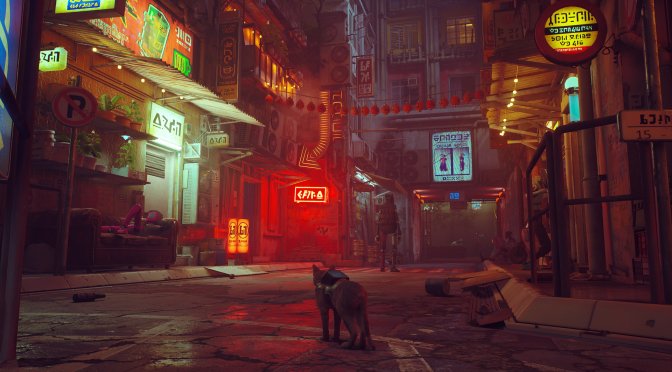Now here is something really interesting. Stray, the latest cat adventure game, appears to have numerous Ray Tracing effects that are disabled by default. However, PC gamers can actually force these RT effects by simply enabling DX12 support.
Now before continuing, do note that this trick does not work in other Unreal Engine 4 games. In other words, you can’t enable Ray Tracing in other UE4 games by simply tweaking an .INI file. In order for this to work, the game needs to already have actual RT code, implemented by the developers themselves.
With this out of the way, you can enable Ray Tracing in Stray by adding a simple command parameter to it. Just open Steam and add the “-dx12” launch parameter to the game.
By doing so, the game will automatically enable Ray Tracing Shadows, Ambient Occlusion and Reflections. And no, this isn’t a placebo effect. The game does actually have Ray Tracing effects.
Reddit’s member speedtree has shared the following comparison between DX11 (left) and DX12 (right). This comparison showcases the RT DX12 effects. We can also confirm their presence after testing it ourselves.
The downside here is that these Ray Tracing effects come at a great cost. Our NVIDIA GeForce RTX3080 was unable to provide a 60fps experience even at 1440p. Not only that, but the game does not support NVIDIA DLSS (or AMD FSR 2.0), and there is currently no way to force these upscaling techniques.
Let’s hope that BlueTwelve Studio will add support for NVIDIA DLSS, as well as in-game adjustable quality settings for the Ray Tracing effects via a future patch!

John is the founder and Editor in Chief at DSOGaming. He is a PC gaming fan and highly supports the modding and indie communities. Before creating DSOGaming, John worked on numerous gaming websites. While he is a die-hard PC gamer, his gaming roots can be found on consoles. John loved – and still does – the 16-bit consoles, and considers SNES to be one of the best consoles. Still, the PC platform won him over consoles. That was mainly due to 3DFX and its iconic dedicated 3D accelerator graphics card, Voodoo 2. John has also written a higher degree thesis on the “The Evolution of PC graphics cards.”
Contact: Email



